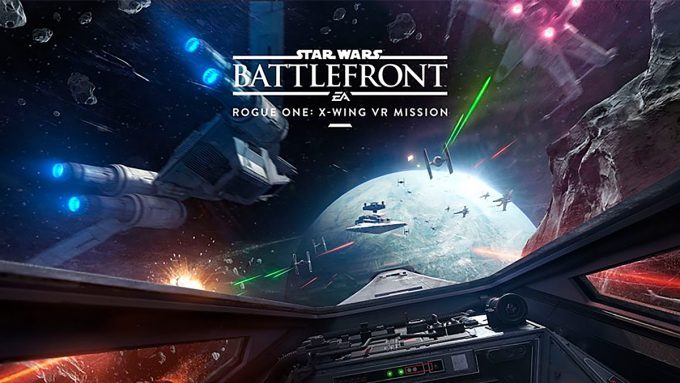It’s been confirmed that the soon to launch Star Wars Battlefront X-Wing VR Mission on PlayStation VR is powered by DICE’s coveted Frostbite Engine, a strong hint that more AAA VR development is on the way from the company.
Star Wars Battlefront is easily one of the best looking games ever made. That’s thanks in no small part to the proprietary Frostbite game engine, created originally by Battlefield developer DICE, and eventually sucked up as part of an EA acquisition of the company. Now the game engine powers some of the best looking games of this generation, like Mirror’s Edge Catalyst, Battlefield 4, and the aforementioned Star Wars Battlefront.
Speaking of Battlefront, the company is just about to release the PSVR exclusive Battlefront X-Wing VR Mission, giving players the first glimpse of Battlefront’s (and EA’s) take on virtual reality.
 And while the easy path would likely have been to take one of the readily available built-for-VR engines—like Unreal Engine or Unity—to develop a one-off Battlefront VR experience, the developers behind the X-Wing VR Mission have confirmed that it is indeed the Frostbite engine powering the experience. That means two things: 1) it’s likely to look as amazing as Battlefront itself (PSVR limitations withstanding), and 2) EA has adapted the Frostbite engine for virtual reality.
And while the easy path would likely have been to take one of the readily available built-for-VR engines—like Unreal Engine or Unity—to develop a one-off Battlefront VR experience, the developers behind the X-Wing VR Mission have confirmed that it is indeed the Frostbite engine powering the experience. That means two things: 1) it’s likely to look as amazing as Battlefront itself (PSVR limitations withstanding), and 2) EA has adapted the Frostbite engine for virtual reality.
That’s a good indication that more AAA VR content will be coming from EA. Adapting Frostbite for VR rendering lays a foundation to take the countless man hours poured into the engine and huge franchises like Mirror’s Edge and Battlefield, and apply them to VR content. You can imagine that the X-Wing VR Mission will benefit from many of the assets, effects, rendering capabilities, and much more that came from Battlefront’s budget, which likely approached $100 million.
In 2015 (to this very week, in fact) DICE confirmed that it was “building a small and collaborative VR team,” and at the time was seeking four full time senior VR positions, which would become the ‘Frostbite Labs’ team.
In may of this year, Frostbite Labs lead Johan Andersson revealed that he had “[demoed] a few Frostbite VR experiences” to Hideo Kojima, the renowned director of Metal Gear and more. Those unnamed experience were shown in photos running on an Oculus Rift, which suggests that Frostbite’s VR capabilities go beyond just PlayStation VR, and are likely generalized for major headsets including the HTC Vive.
Had a super fun time chatting & demoing a few Frostbite VR experiences to @HIDEO_KOJIMA_EN who was over visiting us! pic.twitter.com/zIhEZJD2qC
— Johan Andersson (@repi) May 17, 2016
Work done by the Frostbite Labs team is likely to have led toward the engine’s VR capabilities, and may have directly made the X-Wing VR Mission possible, though it would be EA’s Criterion Games team that would lead the development of the experience itself.
Given all of this, including additional hiring at Frostbite Labs and EA for positions pertaining to VR, the X-Wing VR Mission seems more than a simple test of the VR waters for the company.







